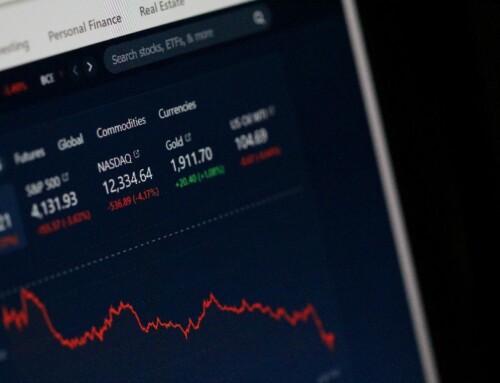There are mainly two methods of investing. Fundamental analysis and technical analysis. There has been a debate raging on about which of these methods would yield a better return.
Fundamental analysis is supposedly the foundation of solid investing. It is looking at the underlying health of the company and examining whether the figures that present itself on its balance sheet make sense. In essence, fundamental analysts value a company based on the sum of its discounted cash flows. This means that the fundamental analyst adds up all of its future cash flows and discount it for inflation to get the value in today’s terms. The theory behind fundamental analysis is really that simple. However this value does not fluctuate on a daily basis, however the stock market displays a very volatile behaviour and fundamental analysts try to take advantage of the times when the share prices of a certain company is lower than its intrinsic value.
This then brings us to the theory that a stock market does not believe in fundamentals. If it did then the stock market would be a very boring place with few movements in prices. Since all stock market participants will be looking at the value of a company based on all of its discounted cash flows, there could not be much room for profit since such information was asymmetrical. The truth is that the stock market swings wildly and participants do not look solely on fundamental analysis. Human behaviour in the stock market is like the theory of the greater fool. The value of the stock to market participants is not based solely on fundamentals but on the fact that you can sell off the stock at a higher price at a later date to someone who will be willing to buy it. This is called speculation and most stock market participants engage in this behaviour.
This is where technical analysis comes in. Technical analysts look not at the intrinsic value of a company but the underlying trend of a stock. They do this by looking at charts. Technical analysts read candlestick patterns and moving averages coupled with a few other parameters to determine whether a certain stock is down-trending or up-trending. In today’s time and age, information is readily available to just about anyone and thus a company’s intrinsic value is easily determined. For retail investors the market is not there to be influenced because the individual investor does not have the financial might to influence the pricing of the stock. However, with technical analysis certain patterns may be studied and outcomes can be predicted. For example by looking at charts a seasoned technical analyst would be able to to tell whether a certain stock was being snapped up in bulk by huge institutions. The technical analyst can enter the market using certain signals and catch the uptrend. Yes the profits may be small as technical analysts enter a stock only when a trend has formed but if done accurately the rewards can build up over time.
So then what is the right way to invest? I believe in a mixture of both. To have a watchlist of companies with good fundamentals on one hand and to use technical analysis to follow trending stocks. Next would be to see if any stock fulfills both fundamentals and technicals. By marrying the two one may have a better chance of making money.
My company will be holding a series of investment seminars to share with our subscribers as to use fundamental and technical analysis to pick stocks. Our track record has been positive since entering the market in 2004 and we would like to share our stock trading ideas. Our free seminars will start soon and to keep updated do sign up for our mailing list at www.moreassets.sg.
Yours Sincerely,
Daryl Lum






